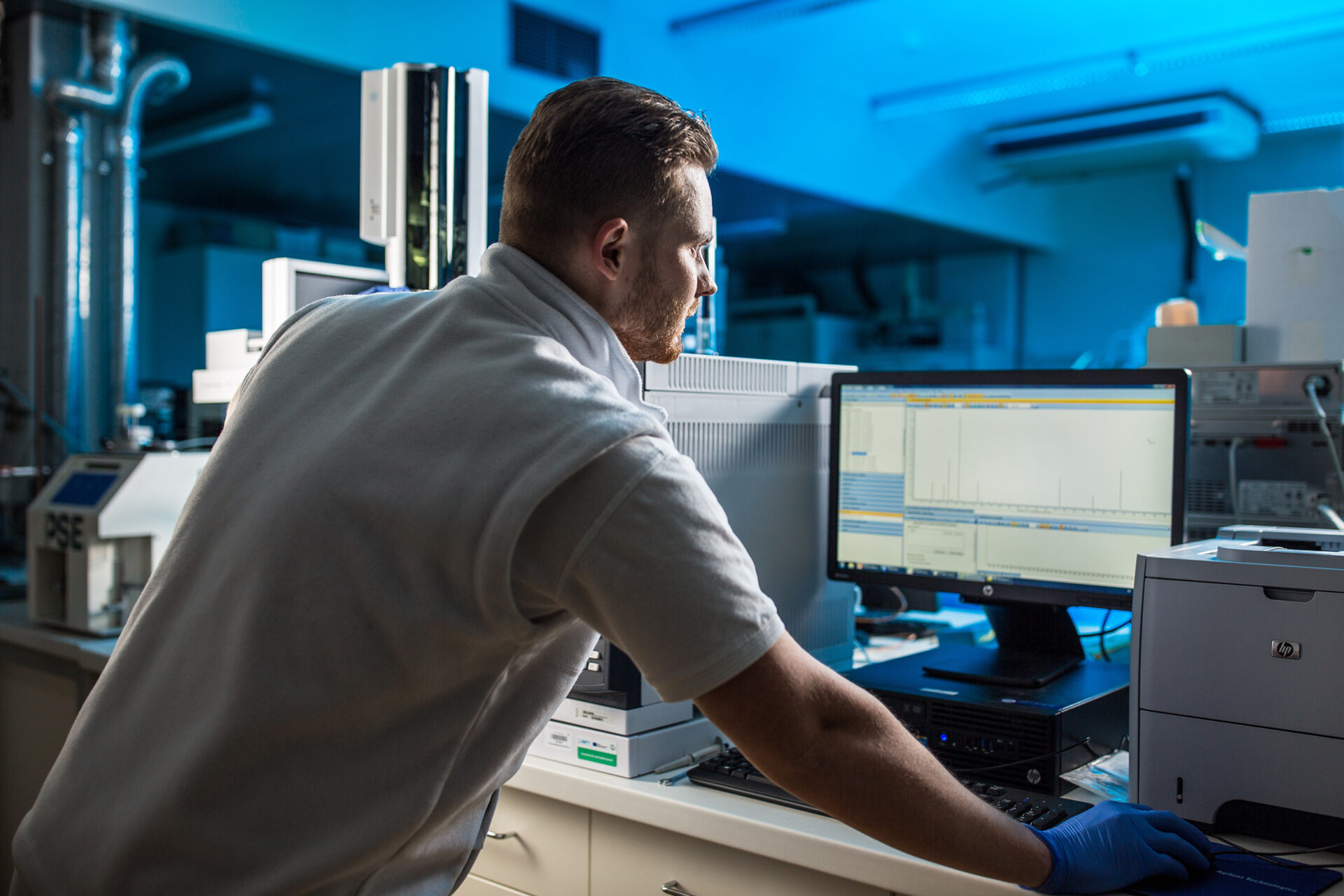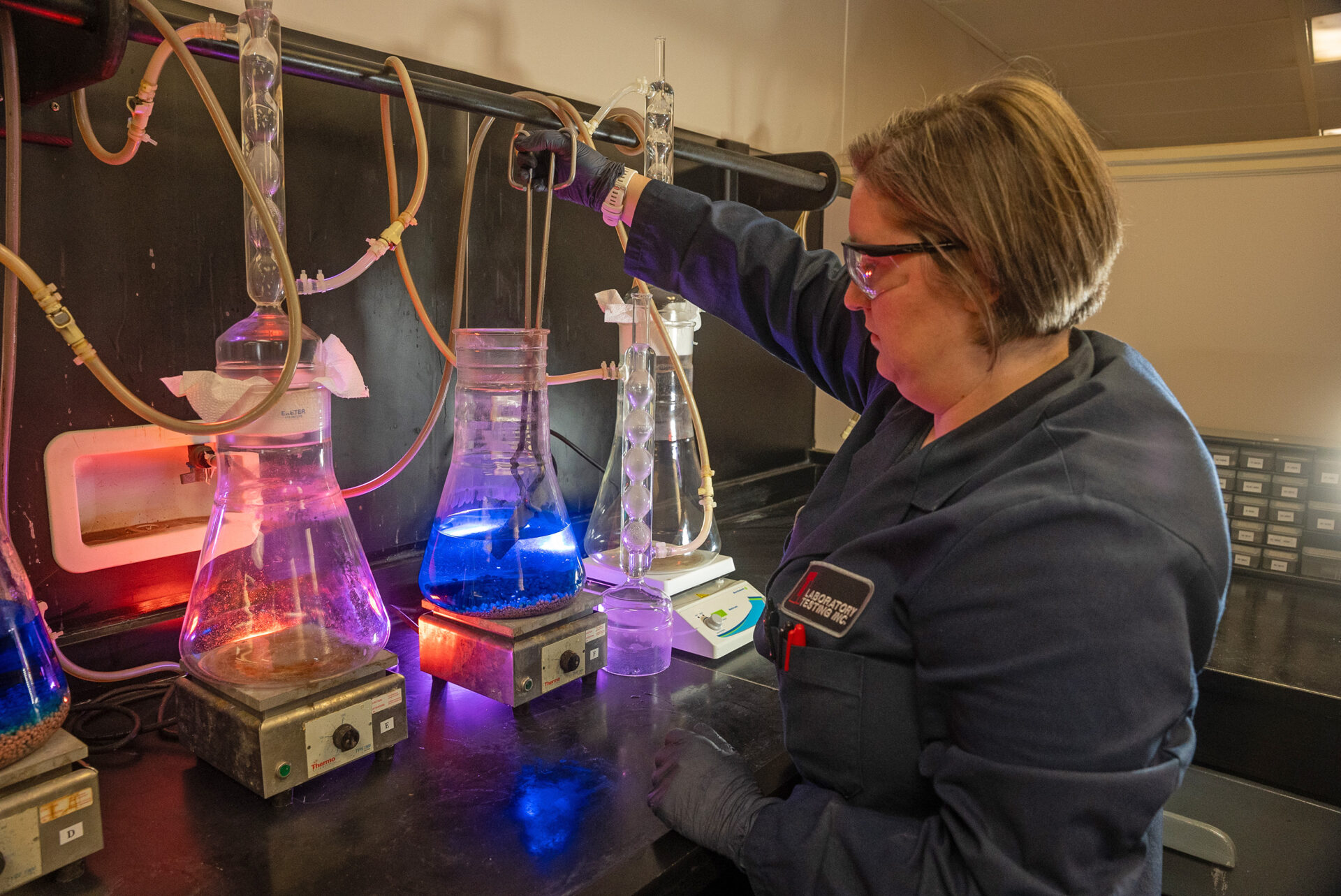

Inert Gas Fusion (ONH): LECO Oxygen, Nitrogen, and Hydrogen (ONH) analysis is a technique used to measure the amount of these elements in metal, alloys, and inorganic materials. The process involves heating a sample in a graphite crucible within a high temperature furnace under an inert gas, helium, or argon. The sample melts and releases gases. These gases are carried by the inert gas through the detectors which provides the amounts of Oxygen, Nitrogen, or Hydrogen.
Combustion: LECO combustion analysis for Carbon and Sulfur (CS) is a widely used method to determine the Carbon and Sulfur content in a variety of metals, alloys, ores, and inorganic materials. The process involves combusting a sample in a high temperature furnace in the presence of oxygen causing the combustion of Carbon and Sulfur. The gases pass through detectors that measure the concentration of Carbon and Sulfur.
In the Lab, LTI has a LECO 844 unit that analyzes Carbon and Sulfur by Combustion, two ONH 836 units that analyze Oxygen, Nitrogen, and Hydrogen, and a LECO RHEN 602 unit for Hydrogen in Aluminum and Aluminum Alloys.
Inert Gas Fusion (ONH)
Inert gas fusion is a quantitative instrumental chemistry technique for determining the concentrations of gases (nitrogen, oxygen, and hydrogen) in ferrous and nonferrous materials. These gases are found in materials as a result of melting processes and subsequent hot and cold working methods. Managing the gas contents at low levels minimizes their adverse effects on the materials’ mechanical properties.
The inert gas method heats the sample to a molten state in a fusion furnace with an inert gas atmosphere and reverses the bonding between the gases and metals, causing the dissociation of the gases. The fusion gases are separated and carried to a detector. An infrared detection system is used at LTI to detect oxygen, and a thermo-conductivity system is used to detect nitrogen and hydrogen.
Combustion Method for Carbon & Sulfur Analysis (CS)
High temperature combustion is used for sulfur and carbon analysis to determine their content in a variety of metal and inorganic materials. The test begins by heating a sample in a high-temperature furnace which is flooded with oxygen, causing the combustion of the carbon and sulfur in the sample. The gases are passed through a series of traps, absorbers, and converters to remove interfering elements and to ensure the gases have the proper structure for detection. Infrared detection is used to determine the concentration of the carbon or sulfur. The infrared absorption detector measures the absorption of the infrared wavelengths characteristic of carbon and sulfur. The amount of energy absorbed is related to the amount of the carbon or sulfur in the test sample.
Quality Specifications
Combustion Method (CS):
- ASTM E1019
- ASTM E1941
Inert Gas Method (ONH):
- ASTM E1019
- ASTM E1409
- ASTM E1447
Hydrogen in Aluminum:
- ASTM E2792
Find Out How LTI’s Services Keeps Customers Content

Partner With LTI Today
Laboratory Testing Inc. has the capacity and capabilities to handle all your material testing needs in a single location. Since 1984, we’ve aided customers worldwide with accurate nondestructive testing and precise material lab services. Request a quote or contact us today to see how our industry-leading turnaround times can keep your mission-critical approvals moving forward.